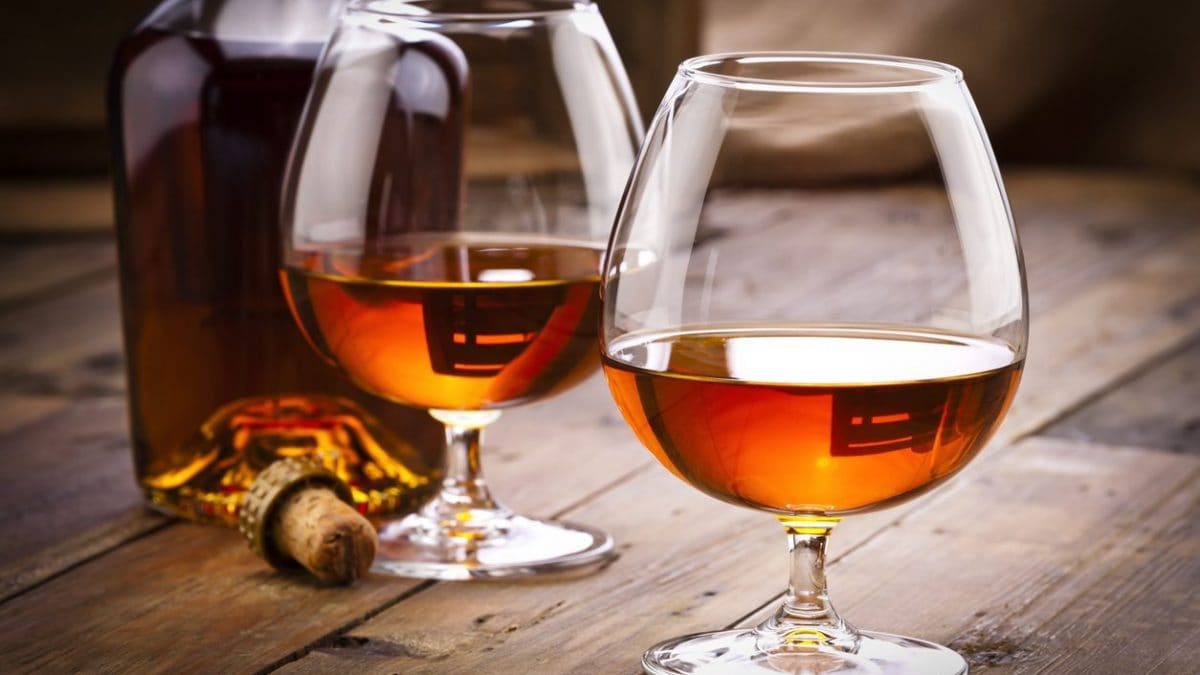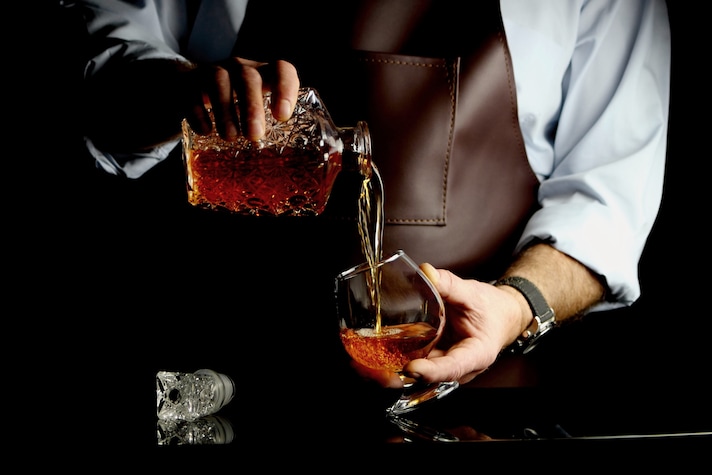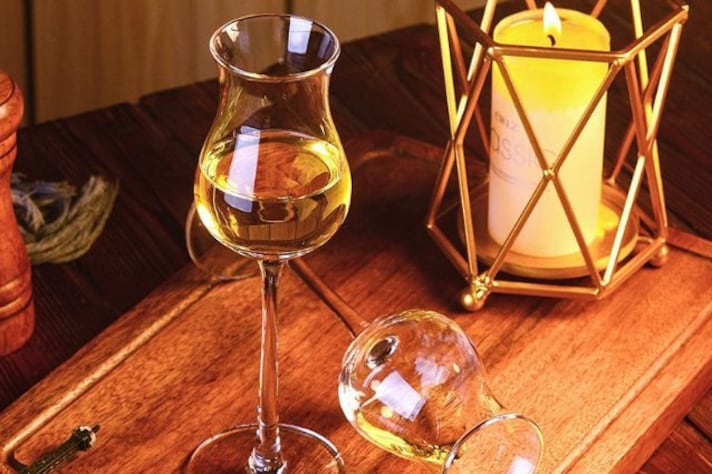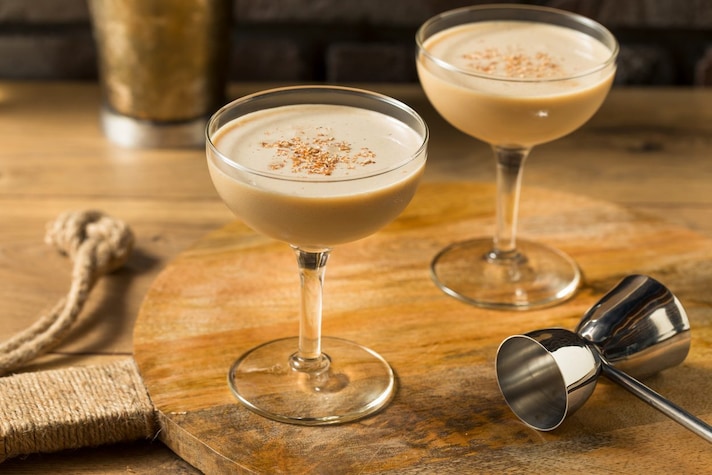
Even if you are not a big drinker, you have certainly heard of cognac: it is a French brandy obtained from the distillation of white wine, very renowned both as a drink in itself and to prepare other very famous cocktails. It is an excellent product protected by an Appellation d'origine contrôlée (AOC), whose production dates back many centuries: the first news about cognac can be found between the mid-sixteenth and seventeenth centuries, in the same area where this excellent drink is still created today.
Cognac, in fact, is not produced throughout France, but only in the departments of Charente and Charente-Maritime in western France, and a small portion of the Dordogne and the department of Deux-Sèvres; it takes its name from the city that has traditionally been the main seat of its trade, Cognac.
The cognac market lives under the wing of four large producers (Rémy Martin, Hennessy, Martell and Courvoisier) that produce almost all the bottles on the market, but how do you recognize a quality cognac and how do you best taste it? Here's everything you need to know about the precious French spirit.
What is Cognac And How Is It Produced?
Cognac is a white wine distillate produced in western France, north of Bordeaux, according to strict regulations governed by the Appellation d'origine contrôlée (AOC). It can be produced exclusively in certain areas of western France and only from certain grape varieties, first and foremost Ugni blanc.

The production regulations for cognac became necessary at the beginning of the twentieth century following the growing spread of imitations of this product, which is very ancient: the first distillation of cognac took place in 1549, while the cultivation of the vine much earlier, in 1111, when the Benedictine abbey of Fontdouce was founded. The technique was then refined by learning the tradition of wine distillation from the Dutch (during the 17th century) and by the push of the English, who urged the farmers to produce their own distillates to free themselves from the Dutch "pressure". But it was the French who improved the stills for distillation and made them more efficient: they invented the "charentais", with a small capital, which better preserved the organoleptic characteristics of the distillate. The French also became masters in the use of wood (essential to the aging process), and so distillation gradually spread throughout the region to the point that by 1874 there was a proposal to divide the region into “zones” with very specific aroma and flavor characteristics.
The reasons for the success of cognac are linked to the production system, a tradition that is still handed down today just as it was in the past. The grapes used, coming from specific white vines (98% Ugni blanc, in much smaller percentages folle blanche, colombard and some other rarer ones like sémillon and montils) are lightly pressed to obtain a must that, after about a month of rest, is distilled twice and then refined in French oak barrels from Limousin or Tronçais for a minimum of two years. After which a blend is produced, assembling cognacs from different vintages, and it is bottled.
This is the general explanation of the process of creating cognac, but then each producer uses different and specific methods and tools, which differentiate the final result giving the drink different flavors. Some examples? There are different styles of distillation with yeasts or without yeasts, there are those who prefer to distill the head (Têtes) and the tail (Secondes) of the previous distillation or in the wine or in the brouillis (the result of the first distillation), and everyone chooses how long to leave the cognac to rest: the aging can continue up to 60 years.
The Different Varieties of Cognac
Precisely on the basis of the length of aging of the youngest distillate present in the final blend that gives life to the cognac sold on the market, 4 main categories of drinks can be distinguished:
- S or De Luxe (Very Special) or *** (3-star symbol): the youngest spirit in the blend must be at least two years old.
- VSOP, or Réserve (Very Superior or Very Special Old Pale): the youngest spirit in the blend must be at least four years old.
- XO (eXtra Old): the youngest spirit in the blend must be at least 6 years old; this is the maximum legal guarantee of aging given by the AOC of cognac.
- XXO (Extra Extra Old): specific mentions where an aging period of 14 years or more is specified.

These are the terms you normally find on cognac labels, but then there are a whole series of other classifications and terminologies that are used for very long aging (for example Vieille Réserve or Hors d'age) or to identify the origin of the cognac. These are all indications that serve to define the quality of a cognac: for example, if you find a blended cognac, it means the drink is the result of blends produced by different distilleries in different districts and with not particularly long aging, while cognac single distillery or cognac single distric means that the blends are from a single distillery or a single district.
The most excellent product is the single estate cognac, because it means that it is the most representative of the single distillery, which allows you to read the territory in the most complete way and appreciate the most intimate organoleptic nuances, which are influenced by elements such as the soil and the microclimate. The quality is very high, with important aging and a decidedly high price.
How Do You Recognize a Quality Cognac?
There are several aspects that you need to keep in mind if you are looking for a high quality cognac and, in this, the label is fundamental because based on the information reported you will be able to understand how much value the cognac you are purchasing has. The quality of the cognac, in fact, depends on how much it has aged, the distillery that worked it and the area in which it was produced, all factors that affect the smell, color and flavor of the final product.
A high-quality cognac must have the denomination of origin (AOC), while as regards the classification – which we explained in the previous paragraph – XO (Extra Old) cognacs are usually considered to be of better quality: they are those that have had a longer aging and therefore have a more complex bouquet. The production area is also very important, because different soils produce different grapes, more or less valuable.
The cognac production area is divided into seven sub-zones called crus, roughly concentric, each of which produces a different quality of distillate due to the more or less chalky composition of the soil and the geographical position. The areas considered to be the best are the Grande Champagne and the Petite Champagne, therefore the most refined cognacs are those that distill wine from there (it has nothing to do with the sparkling wine region, in this case “champagne” was the ancient name of the countryside regions where cognac was produced).
If the cognac comes from only one of these areas, the corresponding complementary geographical denomination may be indicated on the label, for example "cognac Grande Champagne". Blends of different crus may only be called cognac, with one exception: cognac obtained from the blend of spirits from Petite and Grande Champagne (at least 50%) is called "Fine Champagne".
Generally, you will have understood that, beyond the area of origin and the processing, the best cognac is the one that has aged for a long time, although this does not mean that the younger one is not good: there is no “right” flavor, the evaluation is subjective. Generally speaking, a quality cognac has a balanced flavor, with notes of fruit, vanilla, spices, and oak, which will be softer and more complex in older cognacs and fresher and livelier in younger cognacs; the color also depends on the aging, with a young cognac being lighter and an older one that, over the years, acquires darker shades such as amber or brown.
How to Drink Cognac and How it Is Used in Food & Beverage
If you want to enjoy cognac to its full potential, you must follow some very specific instructions. Cognac is served neat, in 4 cl doses, at a temperature of 68-71°F/20-22°C, in a Balloon or Tulip glass to facilitate decanting and to allow the aromas to be released thanks to the heat emanating from the hands, a process called “humanization”.

Cognac is an excellent drink on its own, but it is also used to create a whole series of very good cocktails, some of which are true icons of the beverage world:
- The Sazerac, invented by Antoine Peychaud in New Orleans around 1830 and named in honor of his favorite cognac, the Sazerac-de-Forge et Fils. It is the first American cocktail in history and is prepared with 5 cl of cognac, 1 cl of absinthe, a sugar cube, 2 drops of Peychaud's bitters.
- The Alexandre, a classic after-dinner drink with a particularly sweet flavour. It was invented in 1922 by the famous bartender Harry MacElhone, then working at Ciro's Club in London, in honour of Princess Mary's wedding, which is why the cocktail is white. It is prepared with 3cl of cognac, 3cl of crème de cacao and 3cl of cream with a nutmeg garnish.
- The Sidecar, probably invented at the bar of the Ritz Hotel in Paris and so called in reference to the motorcycle that combines a motorcycle and a lateral structure with a wheel. Much loved because it mixes the strong flavor of cognac with the sweetness of orange liqueur and the acidity of lemon juice, creating a perfect balance between the various flavors.
- The French Connection, a member of what are called “criminal cocktails” because they were consumed by famous American gangsters in the 1920s and 1930s. In reality, this was born later, at the end of the 1960s, but its name is inspired by the Corsican-French criminal organization of the same name, active between the 1940s and 1960s, which dealt with heroin trafficking from Marseille to the United States, where it was sold by the Italian-American mafia. In honor of this “alliance,” 3.5 cl of French cognac and 3.5 cl of Italian amaretto are prepared.
In addition to cocktails, cognac is also used to prepare other types of drinks: among the most famous are the traditional Pineau des Charentes, an aperitif based on must with the addition of Cognac, and Grand Marnier, which is an orange-flavored cognac. Cognac is also used to preserve fruit (for example, delicious caramelized figs ), in pastry making to flavor cake mixes, creams and ice cream, and in cooking to flavor meat, fish, pasta or to create sauces such as the iconic pink sauce.
;Resize,width=767;)
